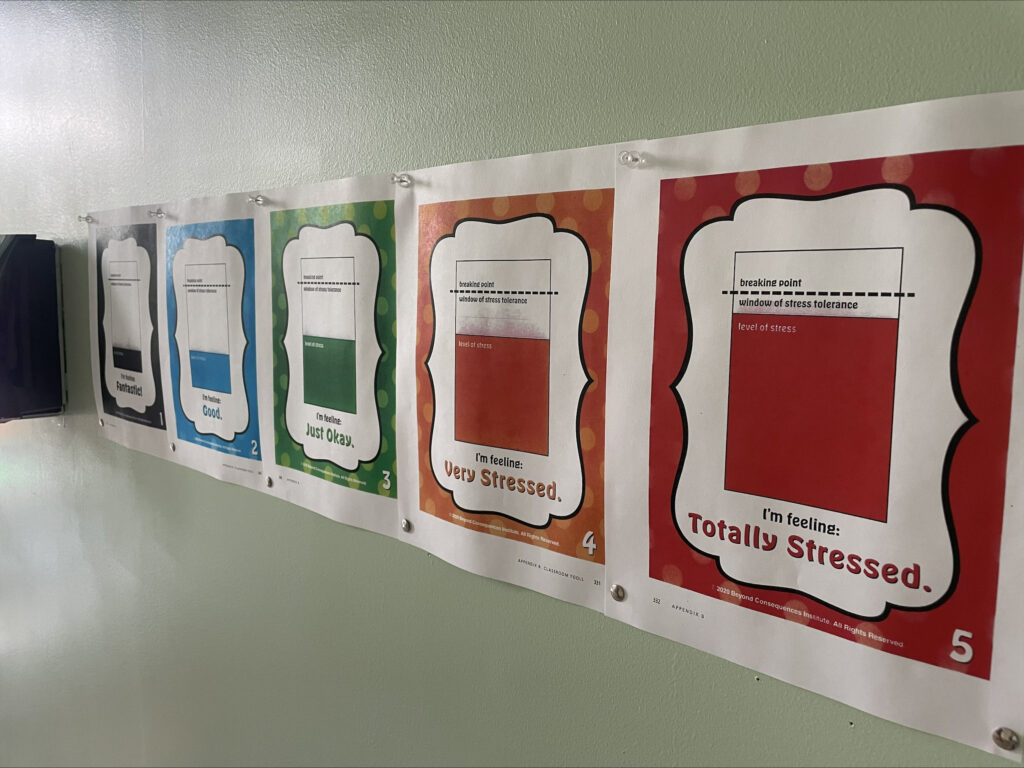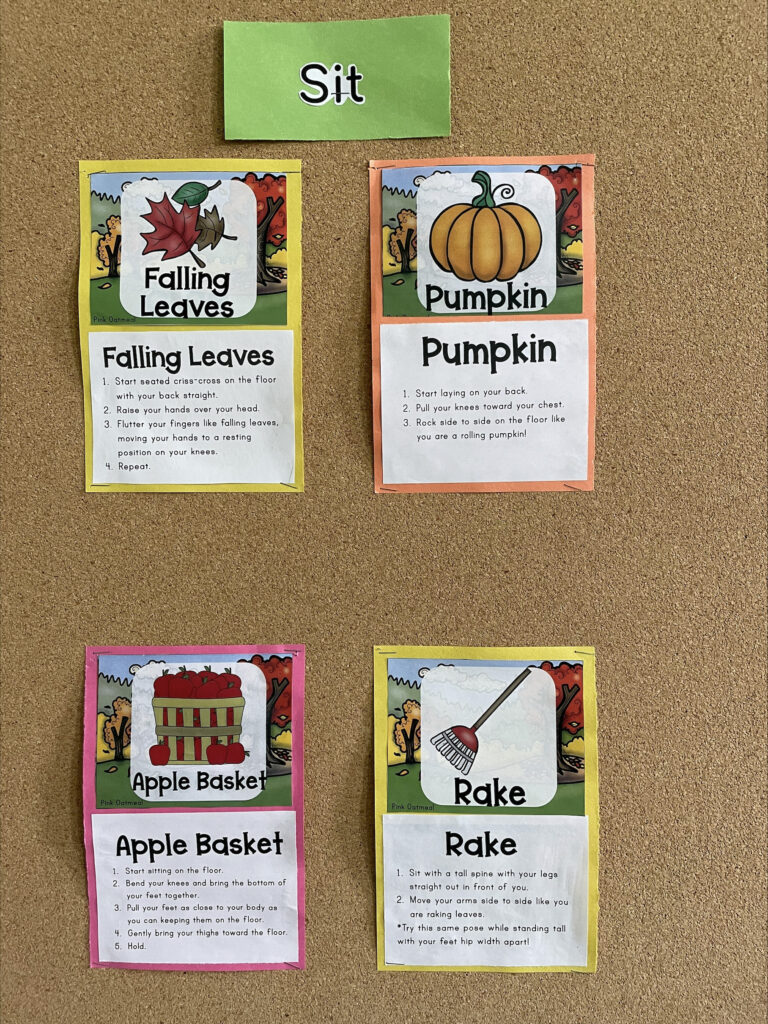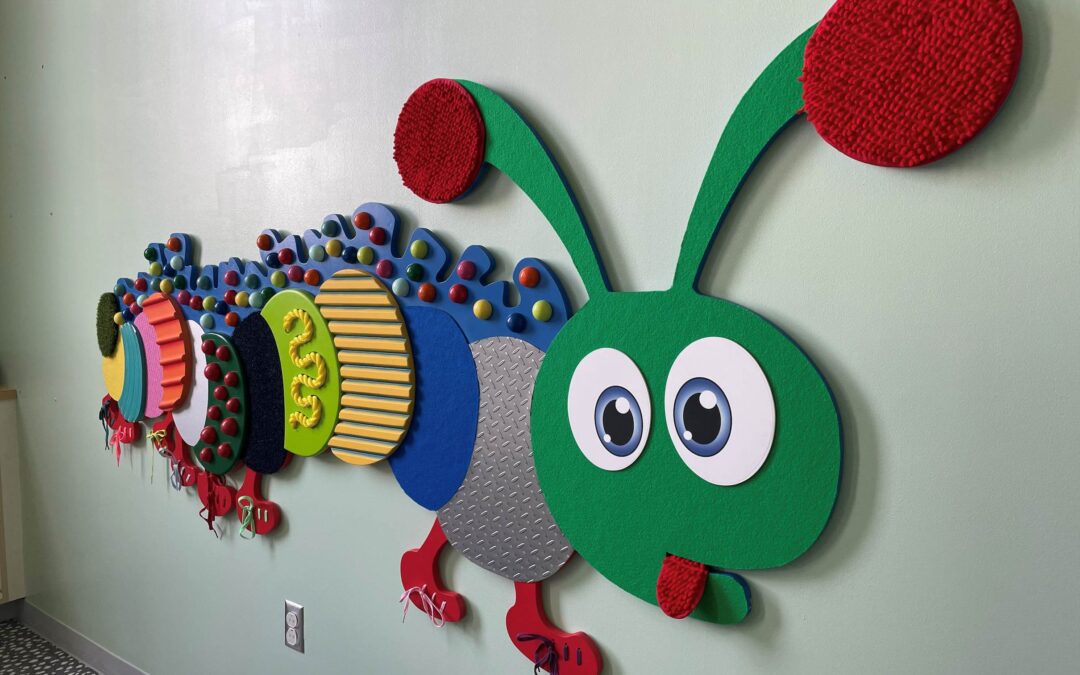Challenging student behaviors can disrupt classrooms and hinder learning. By implementing effective strategies, educators are able to create a more positive and supportive environment for all students.
Last year, an MEA survey revealed challenging student behaviors as the top concern among educators. While the reasons for this spike in behavioral concerns are complicated, many cite the pandemic’s lasting effects as many students continue to grapple with missed social and emotional development, gaps in critical early intervention services, and the financial strain on their families.

If your physical developmental needs are not met, your emotional needs can’t be met either.
Tina Beverly, social worker at Somerset Elementary School
As a social worker at Somerset Elementary School, Tina Beverly notes, “The ACES (Adverse Childhood Experiences) scores are significant in our district.” According to Beverly, it is not uncommon for students to miss physical and emotional milestones. “If your physical developmental needs are not met, your emotional needs can’t be met either,” she says.
To address these challenges, Somerset Elementary implemented a trauma-informed approach, including the creation of a therapeutic sensory room. The approach has been so successful that the school expanded to include sensory areas throughout the building, including in the hallways.
Teachers often express that staff don’t have the training to meet the behavioral needs that we are seeing.
Mykayla Conerly, Board Certified Behavior Analyst in Waterville

Unfortunately, many schools lack the resources and training to address the students’ growing behavioral challenges that educators are faced with. Mykayla Conerly, Board Certified Behavior Analyst in Waterville, explains, “Most educators don’t receive the coursework that prepares them for the behavioral challenges they will encounter in the classroom.” Conerly helps within her district by providing educators with the tools and strategies they need to develop effective behavior intervention strategies.
Conerly explains that when addressing challenging behaviors in your students, it is important to identify the root cause of the behavior. “While behavior can serve many different functions, when we see challenging behaviors from students, they typically fall into two categories,” she says. “Escape—the student is trying to get out of a task that they don’t want to do or a place that they don’t want to be, or attention—the student is seeking attention or connection from another person.”
Conerly’s district is fortunate to have a behavior analyst, but this is not the norm. “Teachers often express that staff don’t have the training to meet the behavioral needs that we are seeing,” she says.
While many of the challenges educators are observing today are systemic issues, like staffing shortages, there are strategies that can be employed to try and prevent the behaviors from happening in the first place.
Tips to Prevent Challenging Behaviors:
Look for the “Why”
Conerly emphasizes that educators should be curious about the “why” behind the behavior rather than reacting impulsively when students exhibit challenging behaviors. She suggests taking a step back to explore the underlying reasons for the student’s actions. Build positive relationships with your students by being approachable, accessible, and genuinely interested in their lives. Actively listen to their thoughts and feelings, and show empathy through your words and actions.
Remember, behaviors often communicate an unmet need, so by understanding the “why” behind a behavior, you can address the root causes more effectively and create a supportive learning environment.
Give Students More Positive Reinforcement
Identifying the balance between positive and negative interactions in our classrooms is important. “By reinforcing positive behaviors, we see more behavioral change than by punishing negative behaviors,” Conerly explains. “This doesn’t mean we don’t hold kids accountable, but by highlighting the behaviors we want to see rather than those we don’t, we can address the root need of the behavior while building positive relationships and establishing trust with our students.”
Research on the “magic ratio” of positive to negative interactions varies, suggesting anywhere from 3:1 to 10:1. However, the impact of maintaining a high positive-to-negative ratio in interactions is clear. The key principle is that students need far more positive interactions than negative or corrective ones.
Conerly also suggests having a colleague observe and tally your use of negative versus positive reinforcement. “Once we are aware of our positive-to-negative ratio, we can change our behavior accordingly,” she advises.
Increase Structure & Accountability
Conerly encourages educators to establish clear expectations for students. For instance, consider working as a group to create classroom norms and clearly display them for students to follow. She also suggests educators create visual reminders of the daily schedule and walk through the schedule or any changes in routine with students at the start of the day or class period. Educators can also help students transition to new tasks or events by utilizing timers or giving verbal prompts as transition time approaches (e.g., 5 minutes, 2 minutes, 1 minute). This is especially helpful for our learners who struggle with executive functioning skills.
Increase Voice & Choice
To foster positive engagement, offer students choices within boundaries whenever possible. Conerly says, “Studies have shown that when people are offered choices, they are willing to work harder.” By finding opportunities to center your instruction around students’ choices—making it a regular part of the school day—you are sending a signal that you respect them and honor their agency.
Offering students choices might look different depending on grade level, subject matter, and classroom dynamics. However, Conerly has a few suggestions for getting started: offer all students flexible seating options (desk, floor, wobble stool, standing), give students the option to choose a writing utensil that they would like (erasable pen, pencil, mechanical pencil, a pencil with a special design, etc.), provide different options for how students show their knowledge, or allow students to choose if they work with a partner or independently.
Responding to Challenging Behaviors:
While preventing challenging behaviors from occurring in the classroom might be ideal, that will not always be possible. So, how can educators respond when a student’s behavior is escalating, or they become dysregulated?
Keep Calm
The way we interact with students can significantly influence their behavior. Speaking calmly and modeling self-regulation behaviors, like breathing techniques, can help students learn to self-regulate. Conerly suggests that, if possible, educators should try to identify the source of the problem, remove the audience before discussing the behavior with the student, and work together to generate a mutually agreed-upon solution. This might include finding a calming corner, taking a movement break, or visiting a sensory room at your school.
If a student is dysregulated or outside their ‘window of tolerance,’ as Tina Beverly from Somerset Elementary School describes, they benefit most from adult-guided, multisensory integration. This involves providing a calming place where they can learn strategies to cope with their frustration, anxiety, anger, or other difficult emotions.
This is where Somerset Elementary’s therapeutic sensory room comes in. Within this space, educators teach, model, and implement skills and strategies designed to exercise students’ central nervous systems and regulate their emotions. For schools without access to a sensory room, there are other effective techniques educators can use.
At Somerset Elementary, Beverly highlights the importance of adult-led activities. “They are the heart of the sensory room,” she says as an educator works quietly with a student at a sensory table. “[The educator’s] heart rate and her breathing are teaching his body to sync up and helping him to regulate.” Beverly calls this dual attunement—a neurological response where the student begins to mirror the adult.



Support Sensory Needs
If you don’t have access to a specialized space, consider incorporating sensory-based activities into your classroom. This might include providing fidget toys, coloring books, or guided meditations for students seeking sensory avoidance or activities like open gym and scooter board play can benefit students seeking sensory input.
“You won’t be able to teach a student effectively if they aren’t regulated. It’s okay to give them a few minutes to remove themselves and regulate themselves before coming back to learn,” says Conerly.
In fact, Beverly notes that Somerset Elementary has seen improved behavioral outcomes and academic performance since implementing a comprehensive and trauma-informed approach to meeting students’ needs. While the sensory room is available to all students, staff have also created smaller sensory areas throughout the building, including a learning pod in the hallway, sensory corners in each classroom, and smaller sensory classrooms.
The larger sensory room offers a variety of tools for students seeking sensory input, such as a crash pad, trampoline, and weighted balls. The room also provides quiet areas, tents, and other calming activities for students seeking sensory avoidance.
Beverly explains each activity has a purpose. “By using each station, we are teaching the students how to use positive strategies that utilize visual, tactile, and gustatory senses to regulate their body and emotions,” she says.
Everyone Benefits: Making Tools Available to All
Beverly and Conerly both stress the importance of making sensory tools and strategies accessible to all students. As Beverly emphasizes, “This is not something that students have to earn; it is something they need.” Educators can foster resilience and social-emotional learning skills by meeting students where they are, both physically and emotionally, and providing them with the tools they need to regulate their emotions.
Below are some tools that Beverly recommends educators use within their classrooms if they don’t have access to, or the space for, a sensory room within their schools.
→Cozy Corner: Create a quiet space with a rug, bean bag chair, pillows, or other flexible seating options.
→Yoga and Guided Meditation: Incorporate age-appropriate yoga or guided meditation practices.
→Fidget Box: Fill a box with small, quiet toys, such as monkey noodles or squishy balls.
→Sensory Bins: Use a Rubbermaid box filled with rice or beans and add small objects like cars or animals.
→Creative Activities: Provide coloring books, connect-the-dots worksheets, mazes, or puzzles.
→Music: Use music to create a calming atmosphere during sensory activities or any classroom area.
→Midline Activities: Explore activities that engage both sides of the brain, such as bilateral movements or cross-lateral activities.
LEARN MORE
Check out our Learning Hub Courses:
Responding to Challenging Behaviors-Root Cause Analysis for Education Support Professionals
Creating a Positive Learning Environment
REGISTER FOR FREE: maineea.learnupon.com
Contact Mykayla Conerly
For access to more resources or to contact Mykayla Conerly to learn more about her work, visit: www.getbehaviored.com
READ: Empowered By the Human Design:
Tina Beverly suggests reading Empowered by the Human Design by Katie Pagnotta. This book presents the BBARS of Excellence Framework, a resource that integrates social-emotional learning, trauma-informed care, and brain science to help educators create a supportive and thriving learning environment for both students and themselves.




